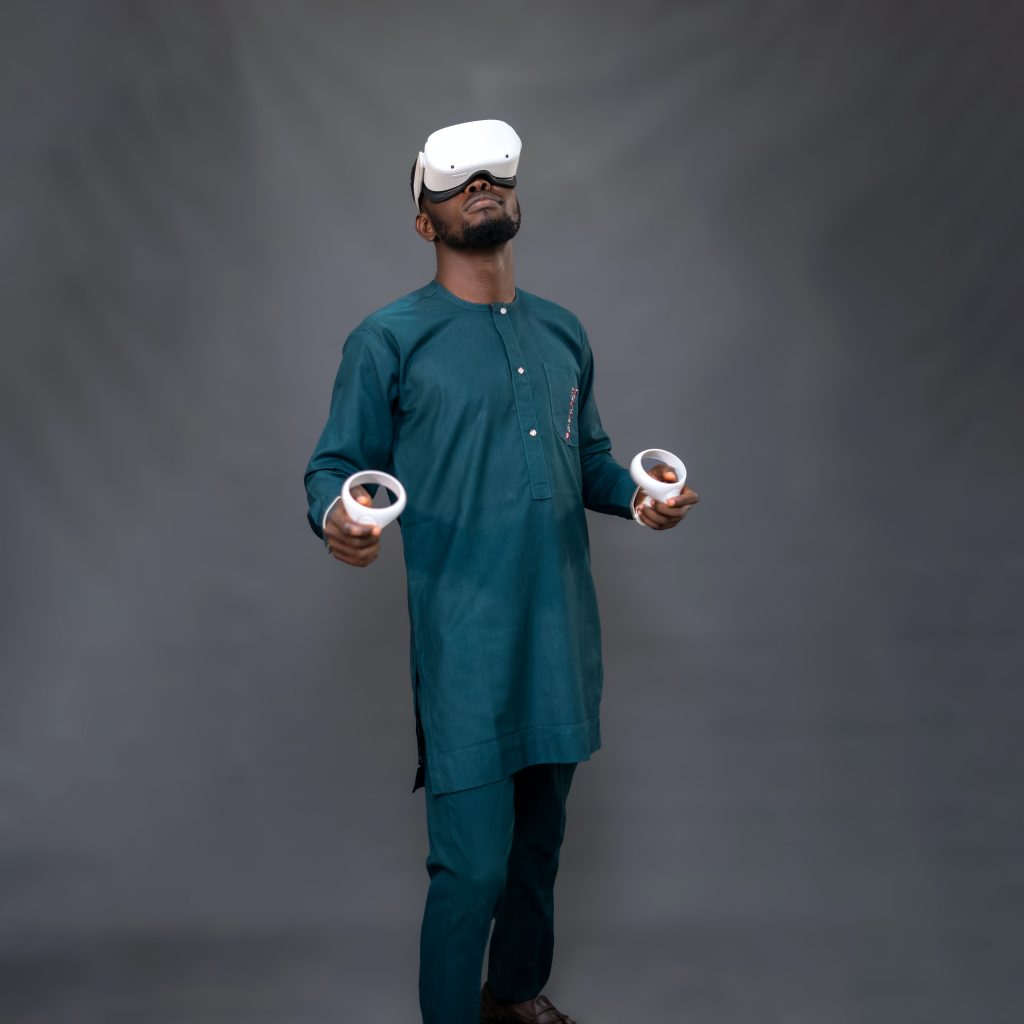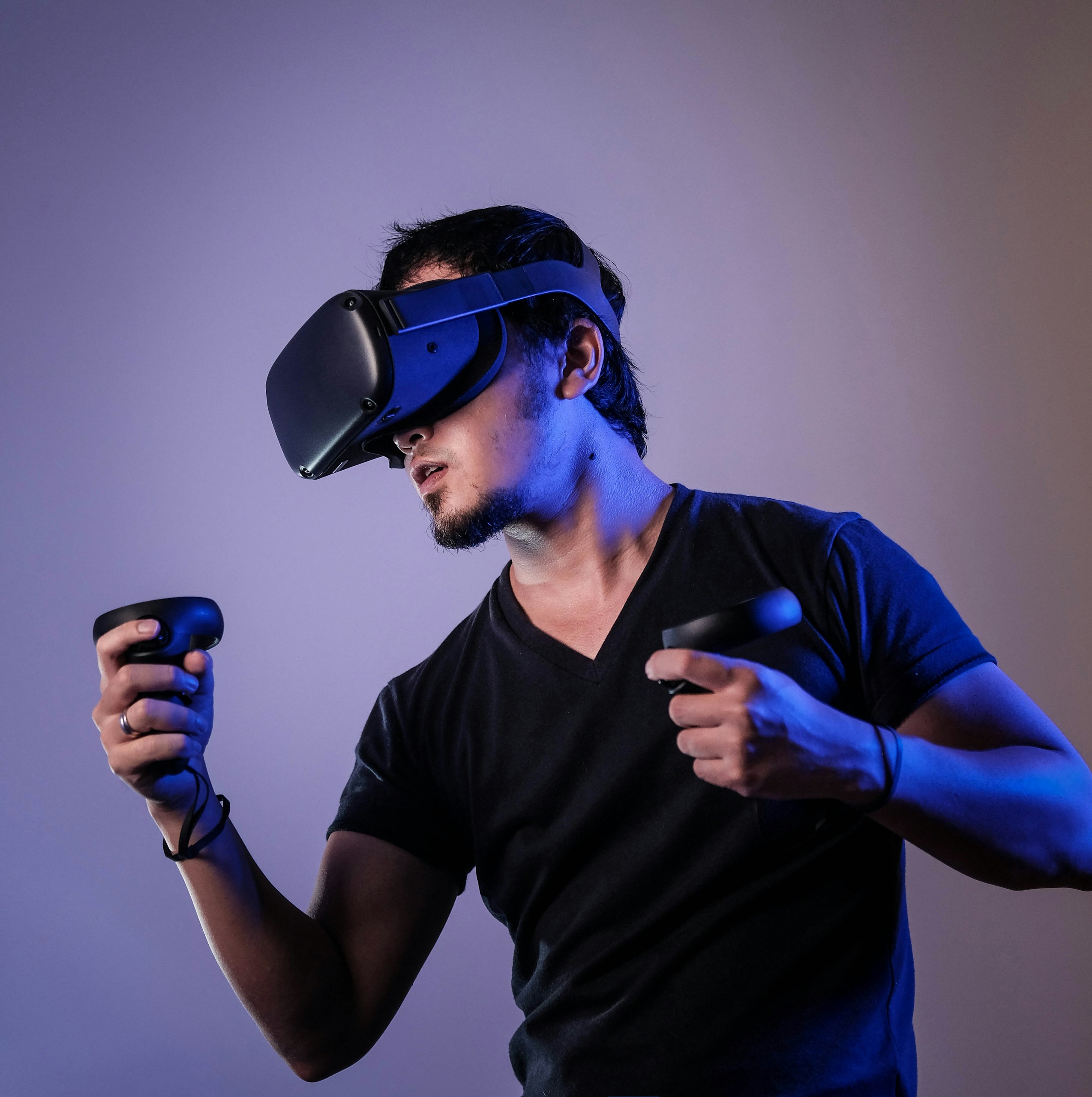- Introduction
Entertainment has gotten to a new level now, thanks to the invention of virtual reality. In simple terms, virtual reality is a construct that represents a virtual world and can be witnessed through virtual reality headgear and earpieces. Virtual reality is a unique form of reality in that all the objects and representations in this form of reality are virtual. Virtual reality is mainly used for entertainment and other applications such as medical research, flight training, and imparting other skills that would traditionally require a more specialized and costly school to earn. One of the virtual reality’s greatest strengths is that it can represent all kinds of constructs that a designer comes up with. The virtual world designer is usually responsible for the items and objects that will be there as well as other aspects like atmosphere, environment, and sounds. The virtual reality experience is one of a kind and unique application of technology with applications that make for better, more immersive entertainment for exploration for scientists and researchers.
With virtual reality, you can quickly go off on an exploration of the constructs and objects in the virtual world and even get to interact with other programmable constructs. For instance, if you need to work on an abstract problem whose solution is not immediately obvious, virtual reality helps you imagine the space and gives you the tools you need to transform this space into what you had in mind. 3D objects are also included in virtual reality worlds, adding an extra dimension to the world and making it appear more realistic to the viewer. Virtual reality also works to visualize vast amounts of data and analyze them without resorting to spreadsheets and complex big data applications that run on cloud computing. Additionally, virtual reality seeks to expand and grow imaginations and creativity in people by virtue of the information, knowledge, entertainment, and experience they provide. In terms of the entertainment aspect, virtual reality aims to entertain and keep the users immersed in a world that is virtually isolated from the real world. Virtual reality can be used for gaming which makes for more realistic and immersive experiences for gamers. Movies cast in virtual reality are also more practical as they add an extra dimension of fun and enjoyment to the entire watching experience. For gaming, additional dongles and devices are required to be used as controllers, and the player is left in a world where the objects in their surroundings are the mental constructs of the designers who made the virtual world in the first place. A virtual reality application provides an escape from ordinary life. It enables the users to feel at peace in a world designed to cater to their mental and psychological well-being. These applications are also seeing increased adoption as they have proven to be more effective at big data visualization and working with massive amounts of information. They also create wonderful, memorable experiences, making it possible for customers, clients, and gamers to be genuinely entertained. Virtual reality enhances experiences, and reaching your goals and objectives becomes much more accessible. Many simulations can also be performed in virtual reality, allowing for more immersive experiences that inspire medical researchers and governments to plan and allocate resources more effectively. Virtual reality can also effectively render scenarios that seem out of control to determine the possible outcomes and course of action to bring things back to order and normalcy. For instance, epidemics and pandemics can be simulated effectively in virtual reality, enabling researchers and other experts to determine the best solution to the prevalent disaster. With virtual reality, you can quickly achieve more than you would have imagined, as it is powerful and malleable, making it ideal for creative designers, imaginative artists, and illustrators. In addition, virtual reality is also being used for strategic planning in remote areas, enabling aid workers to plan their path through jungles and marshes while delivering services promptly. Virtual reality also helps to view alternate designs and renders of 3D objects, such as building plans, in greater detail and at better levels of accuracy. As such, people can easily tour a building’s digital twin before construction on the ground even begins. With this, potential property buyers will have a better idea of the kind of building that is under construction well before they decide to buy into the project. There are still many virtual reality applications, and companies, startups, and organizations are looking for ways to include virtual reality in their services and online operations.
- Virtual Reality
Virtual reality is prepared and presented in a digital world and is mainly used for simulations, rendering objects, and planning architectural designs. It can also be used for entertainment, gaming, watching movies, and learning. There are many virtual reality applications, and it has proven to have the potential and strength to present powerful and impactful messages to their users. Entertainment also becomes more immersive when virtual reality is in place, making for hours of fun and excitement. This form of entertainment is a caliber above classic movies and theatre, delivering sharper, more straightforward, and more genuine experiences to digitally inclined users. Additionally, the worlds and possibilities of virtual reality make it ideal for digital research and determining the many options and opportunities in the metaverse.

- Applications of Virtual Reality
There are plenty of virtual reality applications, and even though this field is still young in computing research, adoption has been massive. Virtual reality is used for entertainment in gaming, movies, documentaries, and other helpful content with additional dimensions and interactivity features. Companies are also researching how to use virtual reality to promote their business, and we expect a lot of innovation and creativity from these entities.
- Conclusion
Digital reality can sound strange or tricky, but when presented in an immersive and highly interactive format, things get much easier to figure out. Modern businesses, entertainment companies, and organizations are using virtual reality at an increasing pace to ensure better experiences for their customers. Virtual reality is quite advanced and can present content and information in a manner that is so much easier for the viewer to understand.
